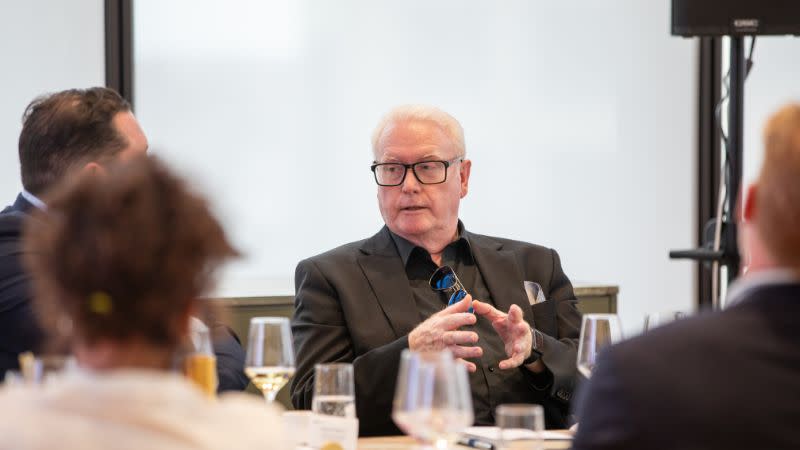Builder-Developer Model ‘Only Way Forward’

As construction risk continues to threaten project delivery, developers are turning to the builder-developer model to get their developments over the line.
And while lenders have historically eschewed the single-party model, their appetite for the approach is growing, according to alternative asset manager and non-bank lender MA Financial Group.
Speaking at a property leaders’ lunch in Sydney this month, MA Financial managing director and head of real estate credit Drew Bowie said the lender focused on quality and liveability of product, and delivery.
“We fundamentally believe that a consumer should receive what a consumer is paying to receive, which means a product of high quality that will have enduring value and attractive liveable qualities. While there are many very good independent contractors who build well, there is naturally a very strong alignment to quality for owner-builders,” Bowie said.
“It just used to be frowned on because if you lost your builder you also lost your borrower, that was the context behind why the banks didn’t like it.”

MA Financial managing director Cathy Houston said it was about making sure the builder-developer “had substance” and the management teams were able to deliver to a high standard.
“As we know with every development project, they never go to plan, and when you have a builder and a developer, you have two parties that share that risk. Many builder-developers however have been able to offset losses in the construction business during these particularly challenging times by improving revenues in the development business, ” Houston said.
“So when you have only one party there, there’s only one party to share that risk, and put their hands in their pockets and deal with any additional costs. The key for us is making sure that one party is a credible party.”
Billbergia is probably one of the busiest builder-developers in Sydney.
Development director Rick Graf said they were building about $750 million in hard construction every year, but he acknowledged the industry had been doing it tough in recent years.
“The last three years have really been the toughest for the industry in terms of loss of builders and developers and loss of relationships between builders and developers,” he said.

“We’ve been a bit insulated from that because we’ve been a family-owned builder-developer for 35 years … and we’re fully vertically integrated, we own our cranes, and formwork and scaffolding.
“We haven’t lost a subcontractor in the past three years and that’s because we’ve nurtured those relationships over a number of years.”
While there are some well-established builder-developers in Sydney, a growing number of developers are rolling up their sleeves when the wheels fall off to keep their projects afloat.
Podia development director Michael Grassi is one such developer.
“I think like a lot of people are experiencing at the moment, our biggest challenge is delivery of construction,” Grassi said.
“We’ve had to terminate a builder on one of our projects and we’ve started a construction company, so we’re now a builder-developer.
“That’s been a real journey over the last couple of months for us.
“The silver lining is that we’ve got a seat at the table with the subcontractors, we’re working through the issues with them.
“We’ve got lots to be optimistic about but there’s also lots of challenges out there.”

Construction delivery is indeed becoming the heartland of good development in the Harbour City and beyond.
Hyecorp co-managing director Stephen Abolakian said the Sydney-based company was heavily focused on delivery.
“That’s the future of what it means to be a developer, the government is taking the edge off what good development was in putting a site together … they’re making that pretty easy now and just rezoning it.
“So developers are really going to be delivery businesses.
“That’s been part of our DNA for the past 30 years, we’re a delivery business, but we’re also good at development.”
MA Financial’s Cathy Houston said there was significant risk in third party builders.
“There’s so many builders leaving the market, whether it’s voluntarily or involuntarily and other builders are stepping in, which increases the risk [exposure],” Houston said.

Grassi said Podia saw future opportunity in “leaning into the builder-developer model, having more control of costs and having more control of our destiny”.
“I think these market conditions are more favourable to builder-developers and I think for us that’s where the opportunity is,” Grassi said.
Sydney has a critical housing shortage that the industry needs to deliver on, and construction challenges continue to hamper that pipeline.
The State Government has recently announced building incentives for developing transport-oriented developments across 32 key locations.
But getting those projects out of the ground is no easy feat “west of the latte line” according to Billbergia’s Rick Graf.
“West of the latte line density can’t sell because it costs you more to deliver than you can sell a square metre,” Graf said.
“We’re certainly hearing all the right noises from all three levels of government.

“But in terms of delivering on all this housing that we need, the issues have lit up, the processes have been announced but still nothing has being delivered. Approvals are falling, commencements are falling.
“The J-curve we’re all looking for is still a long way off. The noise is happening, the lights are on, but there’s still not enough traction.”
Thirdi co-founder Ron Dadd agreed construction costs were not stacking up in areas like Castle Hill.
“It’s great to have increased density, But the areas that need the most supply, the increased density is irrelevant because you just cannot build the dwelling for the price that people are willing to pay for it,” Dadd said.
“Castle Hill is a good example I’ve looked at feasibilities out there, and even if you get increased density you can’t build.
“My general rule of thumb is if your average sale price isn’t at least $12,500 per sq m, even if you put the land in at zero, I can’t make it work.”













